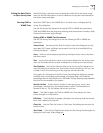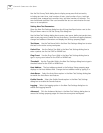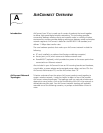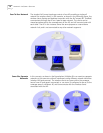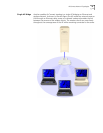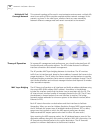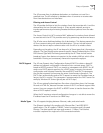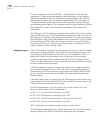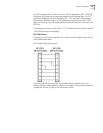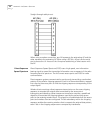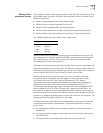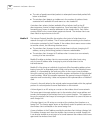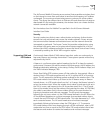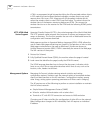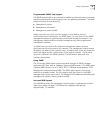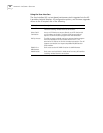
Theory of Operation 27
The
AirConnect Mobile IP (roaming across routers)
feature enables a wireless client
on the Internet to move from one subnet to another while keeping its IP address
unchanged. The scanning and associating process continues for active wireless
clients. This allows the wireless clients to find new APs and discard out-of-range or
deactivated APs. By testing the airwaves, the wireless clients can choose the best
network connection available.
Set the wireless client for Mobile IP as specified in the
AirConnect Network
Interface User Guide
.
Security
Security involves two distinct areas: authentication and privacy. Authentication
ensures that only authorized users access the wireless network. Privacy ensures
that communication between authenticated users and the network cannot be
intercepted or overheard. The Access Control List provides authentication using
the wireless LAN service area and a system administrator-supplied list of all the
wireless client MAC addresses authorized to access the Home Service Area. Privacy
is ensured by enabling the 40-bit WEP encryption option.
Supporting CAM and
PSP Stations
Continuously Aware Mode
(CAM) stations leave their radios on continuously to
hear every beacon and message transmitted. These systems operate without any
adjustments by the AP.
A
beacon
is a uniframe system packet broadcast by the AP to keep the network
synchronized. A beacon includes the wireless LAN service area, the AP address, the
Broadcast destination addresses, a time stamp,
Delivery Traffic Indicator Maps,
and
the
Traffic Indicator Message
(TIM).
Power Save Polling
(PSP)
stations power off their radios for long periods. When a
wireless client in PSP mode associates with an AP, it notifies the AP of its activity
status. The AP responds by buffering packets received for the wireless client. The
PSP-mode wireless client wakes up to listen to the AP beacon every
n
th
Beacon
Interval
where
n
is a PSP-mode value from the 1 to 5-range; the
Beacon Interval
is
set on the wireless client. When the wireless client wakes up and sees its bit set in
the TIM, it issues a poll request to the AP for packets stored for it. The AP sends
them to the wireless client and the wireless client goes back to sleep. A DTIM field,
also called a countdown field, informs wireless clients of the next window for
listening to broadcast and multicast messages. The AP sends the messages
following the
nth beacon
where
n
is the DTIM interval defined in the AP. When the
AP has buffered broadcast or multicast messages for associated wireless clients,
it sends the next DTIM with a
DTIM Interval
value. This value decreases by '1' with
each successive beacon. The AP sends broadcast and multicast messages
immediately following the beacon where the DTIM value is '0.' To prevent a
PSP-mode wireless client from sleeping through a DTIM notification, select a PSP
mode value less than or equal to the DTIM value. PSP-mode wireless clients hear
the beacons and awaken to receive the broadcast and multicast messages.



